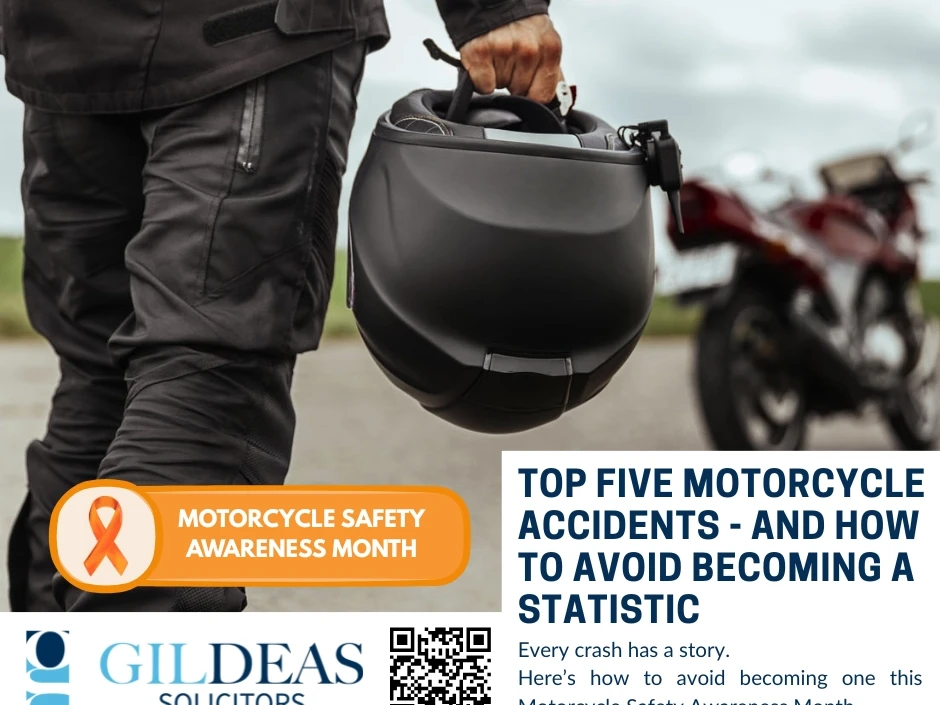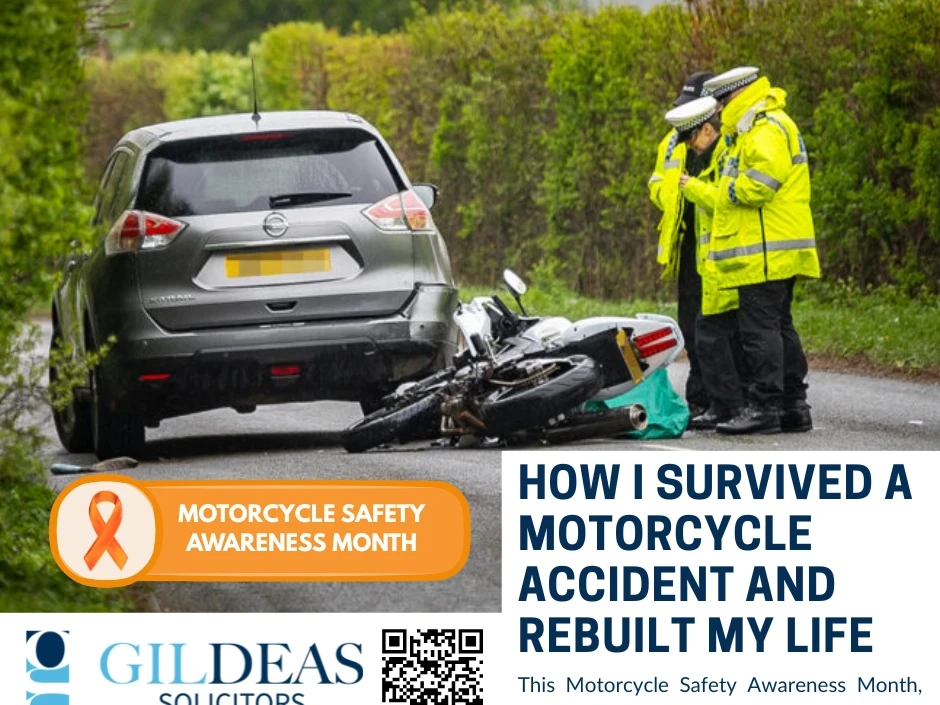April Fools Day: Lawsuits and Lessons Learned
Workplace banter on April Fools Day is harmless fun most of the time, but there are occasions when a practical joke in the workplace can have serious consequences for both employers and employees.
Read as we detail the workplace pranks which led to legal action and serious injury for which the employer could have been found liable.
What kind of pranks can result in a personal injury claim?
Unfortunately, this is an area that is full of examples, usually involving a ‘prank’ which simply hasn’t been thought through.
In 2017, in Patel v Homerton University Hospital NHS Foundation Trust, a pharmacist took a London hospital to court after she sustained damage to her spine and coccyx when a colleague deliberately pulled her chair out as she sat down.
More recently in 2022, in the case of Mr Chell v Tarmac Cement and Lime Ltd, a contractor was working on a construction site when he became the victim of a practical joke gone wrong. As Mr Chell bent down to pick up a piece of cut steel, a colleague placed two explosive pellets on a bench near his ear, then hit them with a hammer which triggered a loud explosion. Mr Chell ended up suffering from a perforated eardrum, hearing loss and tinnitus.
What do pranks in the workplace mean for employers?
It’s not necessarily the case that an employer would be considered at fault for a workplace prank gone wrong – it will depend on several factors. This will depend on the severity of the incident, and other factors such as the employer’s prior knowledge of their employee’s behaviour.
However, there are some things to consider as an employer. For example, it’s important to ensure that everything is handled well in the aftermath of a workplace prank gone wrong.
As an employer, there are a few things to consider:
- Develop robust policies and guidelines to ensure that all employees are aware of their health and safety obligations and encourage them to look out for the safety and wellbeing of others.
- Quickly address any concerns raised about pranks and ensure any serious workplace incidents involving pranks are reported and properly documented when they occur, as the effects of an incident may not arise straight away.
What does this mean for workplace pranksters?
If you’re the ‘prankster’ of your workplace, we encourage you to properly think through any prank you may have planned. For example, it might be useful to think about all the ways your prank could go wrong and if it could result in injury or emotional repercussions to any other person in your workplace.
We would recommend ensuring that you read through any policies or guidelines your employer might have regarding pranks within your workplace – it could be the fact that pranks are not permitted. If your workplace does not permit pranks, it’s important to understand this and take it on board.
It might also be a good idea to discuss any potential pranks you may have planned with a trusted colleague or even your boss – they should be able to help you gauge whether your prank is safe and suitable for your workplace and colleagues. If your boss is on board, this will reduce your personal exposure to ramifications from a prank gone wrong.
What should I do if I'm the victim of a workplace prank?
April Fool’s Day should be a day of harmless fun and laughter, but it’s important to remember some boundaries should not be crossed. Here are our top tips if you’re injured from a workplace prank:
• Assess the Situation: Evaluate the prank and its potential consequences. Determine if any harm has been caused, whether physical or emotional.
• Communicate Clearly: If you feel comfortable doing so, calmly communicate to the person that their joke has crossed a line. Sometimes, individuals may not realise the impact of their actions until it’s brought to their attention.
• Document the Incident: Record any damage or injuries resulting from the prank. Take photos, gather witness statements if applicable, and keep any relevant communication or evidence.
• Seek Medical Attention if Necessary: Don’t hesitate to seek medical assistance if the prank has caused physical harm or distress. Your health and well-being should always be a top priority.
• Consider Legal Recourse: In serious cases where significant harm or damages have occurred, you may need to consider legal action. Consult with a personal injury solicitor about your options and determine the best course of action.
Conclusion
There’s no reason you can’t have some fun with a prank this April Fools’ Day - unless it’s against an employment policy. But bear in mind to think it through and ensure it’s safe and fun for everyone involved.
Gildeas Solicitors is a recognised law firm specialising in personal injury claims, supporting you throughout Scotland from our offices in Glasgow and Edinburgh. We’re passionate about what we do, whilst putting our clients’ interests first. That’s why we make personal injury personal.
Considering our services? Call our dedicated team today on 0141 331 6070.
How Long Do You Have To Make A Claim? A Simple Guide
When making a personal injury claim, it’s important to get in touch with a solicitor as soon as possible. This not only ensures you have professional representation, but also because the law has specific deadlines for when you are entitled to make a personal injury claim.
Read on as we explain in this helpful guide.
How long after an accident do I have to make a personal injury claim?
The time limit for personal injury claims is typically three years, as set out by the Prescription and Limitation (Scotland) Act 1973. These three years are also known as the ‘limitation period’. Cases which have passed the deadline are often referred to as ‘time-barred’.
The law states you have three years from the ‘date of knowledge’ to begin legal proceedings. The date of knowledge is defined as either the date when the injury occurred, or the date when you became aware of the injury and its cause.
For example, if you were injured in a road traffic accident on January 1st 2025, you typically have until January 1st 2028 to make a claim.
Are there exceptions to the three-year personal injury time limit?
Whilst most claims fall under the three-year rule, there are some circumstances where the law differs.
Industrial diseases
The law makes exceptions for certain types of injuries, for example people exposed to harmful chemicals like asbestos in the workplace. Some industrial diseases such as mesothelioma take many years after the initial exposure to show symptoms. In those cases, the law allows you to make a claim from the date when you first realised your health was impacted. This is called the ‘date of knowledge’.
For example, if you were exposed to asbestos at work but only realised your health was impacted on January 1st 2025, you would have until January 1st 2028 to make a claim.
The correct medical evidence can be crucial in these types of cases. A solicitor will always seek expert medical opinion in the first instance with industrial accidents.
Children
In Scotland, if you are under 16, you are required to have someone else make a claim on your behalf. This person is called a ‘litigation friend’. In Scots law, you are deemed capable of making your own decisions as an adult from the day you turn 16. In personal injury, this means you have three years from your 16th birthday to file a claim.
In practice, this means that any child – whether a baby, 5 years old, or 15 – has until their 19th birthday to make a claim.
Capacity
In some cases, a person may be incapacitated, leaving them unable to manage their personal injury claim themselves. The law makes an exception for such cases, and the three-year limitation period begins once the person regains their capacity.
For example, if a person has a condition temporarily affecting their mental capacity. The law states that the three-year period begins once the person regains their capacity.
Every case is different, and the law has to cover various circumstances. For instance, it provides ways where another person can be legally appointed to look after an incapacitated person’s affairs. This could be via a Guardianship Order or a Power of Attorney. Sometimes, these may be in place before an accident, e.g., if a person has dementia or is in a coma. Under these circumstances, the usual three-year limitation period begins from the date of the accident.
Fatal accidents
When a person passes away, their right to claim is still valid. The law allows the person’s next of kin to have three years from the date of their death to raise a claim for damages.
On the other hand, there may be instances when the next of kin are not notified about a death. The law allows an exception here, so the next of kin have three years from the date they were notified of the death.
Why it’s important to raise a claim as soon as you can
Before taking on a claim, your solicitor wants to be confident it has a reasonable chance of success. The less time there is until the deadline, the less time your solicitor has to investigate, prepare, and negotiate with the other side. If there’s not enough time, it may put pressure on both you and your solicitor, or it may even be too risky to raise a claim at all.
With most cases, obtaining evidence is crucial to proving your case. If your case is close to the deadline, it can cause challenges when trying to obtain witness statements or CCTV footage. For example, witness statements are usually more reliable when they are taken sooner rather than later as people tend to remember more details.
Another factor can be when it comes to defending your position. Raising a claim months or years after the date of your accident could open it up to criticism from the other side’s insurance company. The longer you wait to raise, the more difficult it can be to argue a position.
Most importantly, if you don’t settle your claim by negotiation within the three-year period, you’ll have to raise a court action to keep the claim alive beyond the deadline – or lose the right to claim for good.
Does my claim need to be settled within the time limit?
No, but you need to register your claim with the court within the three years. Depending on the complexity of your case and the severity of your injuries, it might not be possible to settle your claim within three years. But as long as you have registered your case with the court within the time limit, (known as ‘issuing proceedings’) then there’s no need to worry.
Conclusion
As we’ve seen, understanding the law around personal injury time limits can be complex. Most clients have the typical three years to make a personal injury claim, but it’s important to be aware of the exceptional circumstances where the law allows extra time.
Regardless of the circumstances surrounding your accident, it’s important to contact us to raise a claim at the earliest opportunity. This will ensure we can carry out a thorough investigation, increase the chances of obtaining evidence, and minimise criticism from the other side.
Gildeas Solicitors is a recognised law firm specialising in personal injury claims, supporting you throughout Scotland from our offices in Glasgow and Edinburgh. We’re passionate about what we do, whilst putting our clients’ interests first. That’s why we make personal injury personal.
Considering our services? Call our dedicated team today on 0141 331 6070.
News: Staff Changes at Gildeas Solicitors
On behalf of the Board of Directors, we are pleased to announce a series of promotions at Gildeas Solicitors.
With effect from March, Deonne Stirling, Nicola Bremner, Seonaidh Currie, and Kirsty Hinds have all been promoted to Senior Paralegal within our Glasgow office.
Their promotions are testament to their development, commitment and dedication to the hard work they have put in with us.
We wish them well as they continue in this next stage of their careers.
Thanks go to all of those promoted for the tremendous work they do every day to the benefit of our clients.
Gildeas Solicitors is a recognised law firm specialising in personal injury claims, supporting you throughout Scotland from our offices in Glasgow and Edinburgh. We’re passionate about what we do, whilst putting our clients’ interests first. That’s why we make personal injury personal.
Considering our services? Call our dedicated New Claims team on 0141 331 6070.
International Women’s Day 2025: In Conversation With Lindsay Hare and Emma Thomson Part 2
In 1919, The Sex Disqualification (Removal) Act was enacted, permitting women to practice law in Scotland, and in the same year, Madge Easton Anderson became the first woman to do so. For International Women’s Day 2025, we want to highlight and celebrate the women who followed in her footsteps. Read on as we interviewed Lindsay Hare and Emma Thomson, Gildeas Directors and personal injury specialists.
In the second part of our interview, they reflect on what International Women’s Day 2025 means to them, and discuss how they navigate the challenges women face throughout the legal profession today.
Q: What has been one of the highlights of your career so far?
ET: There will always cases where you build a memorable relationship with the client, or it may be a particularly difficult fight with the other side! But for me, it’s being certified as trauma-informed. I completed this course only the second year it ran. I am now seeing an awareness of this across the whole legal and justice sector. As I completed the course quite early on, I felt I was ahead of the game.
LH: Mine is coming back after having my son. Getting back and showing you can still do it. It’s tough when your kids are young. I’m coming out of the younger stage – my son is 11 now, I’m out of the tough bit. But trying to manage it and balance it all, it’s not an easy job. You can be running from one car crash to the next, literally! [Laughs] But that’s one of my highlights, throwing myself back into work and still achieving what I wanted to achieve professionally whilst trying to achieve it personally as well.
I’d say I achieve a work-life balance, that’s important for me. My career is hugely important to me – I’m very driven and ambitious, I want to do well – but so is my family. My career can be flexible, my family can’t be. So moulding our policies and moulding the shape of this firm to understand that. Work is work, but we can be flexible. I’m a parent 100% of the time – there’s no flexibility in that for me.
So, that’s where I’m proudest in terms of coming back and working through that. As well, I had some other time out because I had breast cancer so even coming back after that and getting your head around that. I think where our firm is improving is supporting women – moulding the policies, moulding the ideas of the firm, how we strive to run this place – that’s my highlight.
Q: You mentioned the support of the other Directors, and it helps that we’re a smaller firm. When you’re talking about the balance between family and career, would that be more difficult for someone in a larger firm?
LH: I could only really speak for what we do and how we work. A lot of big firms are probably clicking on they’re going to lose their brilliant female lawyers because they can’t do the hours that they were traditionally expected to, or at the time they want them done. They’re getting more alert to that. In a bigger firm, there’s probably more people that can help, but there are more traditional-thinking firms.
ET: I can only talk about my own experience, but there can be more flexibility in a smaller firm, or you can stand out more. You’re not a number. We know our staff very well, and that’s important. There’s a lot of milestones that we’ve gone through and celebrated with our staff – weddings, birthdays, etc. You may be more of a number in a larger firm, or it’s a set of inflexible rules.
LH: We look at circumstances and speak to people, try and work with them. I’d like to think that goes on everywhere. We can be open to discussion with people, it’s the best way to make things work. Obviously, we’ve got the firm’s interests to look after – it’s not a case of you work half the time and get paid full-time, for instance. But coming up with practical solutions we can make work. We have a degree of flexibility because we know our staff – they’re people with real lives and real problems, and we’re here to support them the best we can.
Q: What has been the most impactful change for women that you’ve seen across your career in law?
LH: The increased flexibility the last few years has brought. Covid was hellish, but I suppose the benefit coming out of it was to let people see that flexible working can work. There’s a balance for us – a lot of our staff work hybrid unless they’re junior or in support roles. But that’s got to help, it helps me. For instance, on days where my son’s got to be somewhere before 6.00pm – I can’t finish here and get home, dinner sorted and back out – so I work at home. I like that I can get him where he needs to be. So, the increase in flexible working is one of the biggest changes that I’ve seen within this firm, and I suspect it’s been across the board.
ET: Across the board, yes. Some firms – depending on what area you practice – may have realised you don’t necessarily need to do the “core” 9 – 5 hours. That’s been quite a change, it’s opened positions up. If you’re doing a litigation role and you need to be in court between those hours, there has to be some availability – but depending on the business structure, it might open avenues. Say, “I want to put my kids to bed and then do a bit of work later on”. The flexibility has had a big impact. I’m not sure that’s specific to law?
LH: I think law was one of the areas that wasn’t particularly flexible, it was previously a very traditional working pattern. Other areas were ahead of the times on that. Law firms were a bit stuck in their ways, especially smaller firms – 9 until 5, Monday to Friday, you’ve got to be by your phone.
ET: And no four-day working or flexibility.
LH: Certainly, over the last few years as a firm, we’ve seen an increase in part-time staff. We’ve got many female staff who’ve gone off, had kids, and want part-time hours and we want to keep them because they’re good at their jobs! [Laughs] They might as well be here and do their job well for three days as opposed to losing them. We’ve got folk that start early, finish early, start later, or they’ll adjust their hours a bit if they’re at home. It is across the board, but law was a bit stuck in its ways.
ET: Particularly, I think if you’re a solicitor. You might have had flexibility if your role was support staff, but I think if you were a solicitor or a Partner, there just wasn’t any of that flexibility.
LH: I think IT has made a big difference – it’s got better, that’s been a huge change for law firms. When I started, everybody just came into paper files. Gildeas always used a case management system, but a lot of firms have only started to in the last 5 to 10 years. You were coming into bits of paper everywhere and you couldn’t take it home – so you were really stuck. So, there’s a lot more flexibility now. Firms are run more efficiently. That’s got to be a benefit – as I said, it helps me because I have kids. But everybody wants a bit more time in the house in the evening or has hobbies and things they want to do.
ET: Remember before covid when you were like, “I’ve got a delivery, but I can’t be in for that delivery because I work Monday to Friday, I leave the house at 8 and I’m not back until after 6 o’clock,” – it’s things like that. Just knowing the flexibility is there.
LH: That’s one of the most impactful changes. Your work can be flexible, but your family can’t be.
Q: If there are firms that are still stuck in their ways as you say, what do you think could encourage that flexibility? Do you think it’d be a case of more women coming into senior positions?
LH: I think that’d probably help.
ET: An understanding – if you’ve walked in someone’s shoes, you’re going to have a better understanding. I suppose legislative changes as well – there’s suggestions of flexible working requests from the start of your employment as opposed to you having to be there for so long. Although that might be enforced upon them, rather than change because they want change.
LH: If people could see that you’re at risk of losing good people – you know, because you can’t be a bit flexible – then it’s so short-sighted. People need to open their eyes.
ET: Recruitment is so hard.
LH: And expensive! For firms to say, “No, that’s not what we do,” – it’s a short-sighted approach. Your staff are your firm, they’re the most valuable asset you’ll have in a firm. If you’ve got good staff, losing them over something silly like that – I mean, women do tend to take on a bigger responsibility with children, just in our nature – because we’ve had them, we don’t like to give up the control! [Laughs] But if you’re not willing to accommodate that to a degree, I think it’s short-sighted. You need to be open.
ET: It’s important as well if someone’s working flexible hours or part-time hours, they can still climb up the career ladder. As long as they’re doing the work to be able to do that. It can’t be a case of, “You’ve been in work three days a week, you can’t be a Partner.” That’s important.
LH: Hugely. That shouldn’t be any barrier. If someone’s good, then they’re good. It doesn’t matter how many days they’re here, they’re still good.
ET: I think we’re clear – to be doing this role, you’ve got to be ambitious and driven. That’s important to allow people to grow. Family life is important, irrespective of whether you’ve got kids or not, we all like to spend time with our families.
LH: That’s what balance is. I completely agree, that’s a huge thing. You still have to let people grow, even if they’re not full-time. Although we don’t have many solicitors in that situation at the minute.
ET: We probably will do at some stage – we have a number of young, female solicitors.
LH: And they can’t be restricted.
Q: Do you think there are any traditional ideas across the industry still lingering on?
ET: Absolutely! [Both laugh]
LH: It’s hard.
ET: I suppose – I’m not saying we don’t have any traditional ideas, but I think there might be more across some of the larger firms.
Q: You mentioned, as you go up – Advocates, and stuff like that – the scale is more favoured in terms of men rather than women?
ET: Yes. If you’re going to the Bar, you need to give up a huge amount of time to train to do that, and it’s a huge financial burden. You’re not getting paid for the period of time that you’re training or building up your practice. That’s a massive thing if you’ve got financial commitments or kids. Sometimes, as an Advocate, you get instructed at the last minute. That doesn’t always work out with a family timetable. You can’t drop everything, for instance “Never mind picking the kids up from school today! I’ve got a brief to look at.”
LH: It’s the stability, isn’t it? Income. If you’ve got family to consider, that becomes a much more difficult game to play. I’m pretty sure there will still be very traditional people within the industry. We’re lucky, we don’t hugely have it [at Gildeas]. It’s hard for us to fully recognise, but I’m pretty sure there will be very male-dominated firms.
ET: I think it depends on what the nature of your practice is. If you’re for example, a family lawyer, there might be a bit more understanding of your family situation. Whereas maybe if you work in a corporate firm and you’re looking at mergers at 11 o’clock at night – there might not be as much of an understanding. It might be a bit more traditional.
LH: I know, and there will be people who just think that people should be in the office 24/7, 10 hours a day – where you’re not doing the job properly unless you’re there.
Q: Some people run their business differently?
LH: Yes.
ET: Over the last couple of years, there’s been lots of stories about NQ [newly qualified] positions down south and their salaries. There’s been a grab for NQ positions in London. The salaries are in excess of £100,000 – I suspect someone’s not paying you £100,000 so that you can have a 9-5 job! They’re going to want their pound of flesh! [Laughs] I get it’s that balance of having to live – you’ve got student debt you want to pay off, you want to get on the property ladder, etc. But you don’t have quite as good of a work/life balance if you’re getting paid a salary like that early on. And I wonder – how many people move out of that massive salary bracket?
LH: Where do you go from there?
ET: Are you stuck at that starting position for the rest of your career, or quite a bit of your career? I suspect you’re quite chained to the desk.
LH: I agree. There’ll be a lot of that still goes on within a lot of firms.
Q: The theme for IWD this year is “Accelerate Action”. What action would you like to see happen in the legal industry to continue to make progress?
ET: I suspect there’s a massive gender pay gap still, and disparities between numbers of men and women in senior roles. I don’t know whether it’s a timing thing. There are now more women coming into the profession. We might find in 10 – 15 years, there are more women in senior positions. But the gender pay gap I think is still an issue. Part of this is about women knowing their worth and negotiate their worth, although I suspect statistics will show an inequality still exists.
LH: It’s recognising and promoting the talented women that we have. Getting people into the profession isn’t where the issue lies, it’s that they continue through the profession. It’s really important that we push for flexible working environments and accommodate people, where we can, to make sure we don’t lose our good staff, and they don’t get disheartened and disengaged from the profession. That’s what happens a lot. People come back after maternity, there have been changes while they have been off, or they come back part-time and feel as if they’re getting overlooked for things. They consider, “Oh, I can’t go for that job just now because I’ve got young kids, it’s just too much for me”. Then they disengage and we lose that talent stream. It’s so important that we create as flexible a working environment as possible. We do what we can with the job we have to do, you still need to get your job done at the end of the day – but we make sure we don’t lose the gulf of talent. We push for a good working environment.
ET: We’ve had a couple of discussions recently, on a separate note that different people bring different strengths. Being a partner is not all about fee earnings. You can’t be saying, “You only bring in X amount because you only work 3 days a week, so you’re not worth a promotion.” Different people bring different assets and skills to the job and that’s important to look at.
LH: I don’t know if it’s as common now, but in the past, there was this idea that any woman that wanted to be a Partner were total b*tches to work for because they had to work so hard and fight to get where they are. That that was the way you’d exert your management position – but I don’t think that takes you anywhere.
ET: Absolutely.
LH: My idea about managing people is – I manage the way I’d like to be managed. I don’t ask my staff to do anything I won’t do. I don’t ask them to work crazy hours unless it’s something that really needs done there and then. And even then – I would see if I can do it myself! So, I just don’t think the idea of super b*tchy women running the place – we need to get away from that, it’s a dangerous stereotype.
Q: Do you think that’s quite pervasive, or do you think it’s getting better?
ET: It’s getting better.
LH: I think it’s getting better. I hope so. I hope that’s not what people think of us!
ET: I think there are some female Partners in the profession that do have a reputation for being like that.
LH: It’s probably because of what and how they had to fight for their position. I’d like to think that the path to Partnership, or management is a smoother one now.
Q: Do you think it’s a fine line that women have to walk between being perceived as a b*tch? That men are allowed to be a boss all of the time, whereas women are seen as a b*tch if they’re assertive? Is that still true?
LH: Yes. There is a certain degree of that. I think you even hear it with young kids, young girls – “Oh, she’s bossy.”
ET: When she’s just being confident.
Q: You both have to navigate many relationships – clients, third parties, if you’re litigating – going to court etc. Navigating that must be interesting considering there are certain rules you have to follow. So, would you say for female litigators that that’s a different ball game, considering you might be perceived differently to men? Or do you think it’s the same?
LH: There are some. You do encounter difficult clients look down their nose slightly.
ET: When you’re female?
LH: I mean, I got called a ‘daft lassie’ recently. But that’s few and far between – that’s a client, that’s their issue and not mine. The strength comes from experience and age. I could see why younger people would struggle with that.
ET: Yes, earlier on in your career – what you will tell a client, and what a male colleague tells a client – they don’t quite believe you. I generally treat my opposite how I’d like to be treated. It’s too much energy to be difficult all the time! [Laughs]
LH: I don’t overthink it.
ET: It’s too much energy.
LH: You do encounter prejudice, absolutely. I had a male consultant once – when I began signing off my emails as ‘Director’, he emailed me back as ‘Mr’ – because Lindsay can be a men’s name, the assumption was made that I’m a man. Now I’m assuming that’s because it read ‘Director’. I actually ended up emailing him back, because he did it about 5 times. I emailed back saying, just so you know I’m female. That’s just gender bias – he probably didn’t realise he’s got, but – he has! [Laughs] But you do encounter it with some clients. As we get older and more experienced, if someone says that to me – I’m ready for them now! [Laughs] That comes with knowledge and experience, you might not be able to do that fresh from university. It’s easier for us as we’ve been doing it for longer.
LH: I suspect you are less likely to see that with a man. His clients would be less likely to say that. I think that comes from the “daft lassie” sentiment.
ET: At least your client called you young though! [Laughs] But earlier on in your career, you do find that what you tell someone and what your male colleague tells them – they’ll believe them without a doubt. But they question you sometimes.
LH: Hopefully that’ll get better.
This interview was compiled by Samantha Upton, Marketing Manager at Gildeas Solicitors.
Gildeas Solicitors is a recognised law firm specialising in personal injury claims, supporting you throughout Scotland from our offices in Glasgow and Edinburgh. We’re passionate about what we do, whilst putting our clients’ interests first. That’s why we make personal injury personal.
Considering our services? Call our dedicated New Claims team on 0141 331 6070.
International Women’s Day 2025: In Conversation With Lindsay Hare and Emma Thomson
In 1919, The Sex Disqualification (Removal) Act was enacted, permitting women to practice law in Scotland, and in the same year, Madge Easton Anderson became the first woman to do so. For International Women’s Day 2025, we want to highlight and celebrate the women who followed in her footsteps. Read on as we interviewed Lindsay Hare and Emma Thomson, Gildeas Directors and personal injury specialists.
In the first part of our interview, they reflect on the highlights of their careers in personal injury law and offer advice to young people embarking on a legal career today.
Q: What led you to a legal career?
LH: Well, I had good results at school, and that’s pretty much what you fell into! I went straight from school to do my LLB at Strathclyde. Initially, I wanted to do medicine and then decided that I didn’t actually like blood very much! So I decided to do law instead. I’d applied for medicine then had to phone up the Law School at Strathclyde to ask if they’d consider my application, and they did. So, I just kind of fell into it.
ET: Slightly different for me, I did a BA in Business Law before I did my LLB. I preferred the legal modules, enjoyed formulating two sides of an argument or a story and decided to do my LLB afterwards.
Q: Who or what inspired you as a young lawyer?
LH: I was laughing when you asked this because I don’t think I can say Ally McBeal! I don’t think anyone will remember who she is! [Both laughing]
ET: Mine doesn’t necessarily relate to IWD, but my dad. My attention to detail comes from him. He is very hard-working. Neither of my parents went to university. My dad is very much – “If you’re going to do something, do it right.” Sometimes, I can’t switch my brain off until I’ve finished doing the task i’m working.
LH: For me, it’s the same – I was one of the first in my family to go to university, so I’m quite driven to do the best I can do and whatever I apply my mind to. We were brought up like that as well. I only had my dad, he continued to work after I lost my mum. He was very motivated at work, and he didn’t go to university either. He worked through the ranks of his job, and that’s the footsteps that we followed in. It’s work ethic.
Emma and I are probably quite similar – when I got into university, it was quite competitive. You were driven to be the best you could be, and certainly for me doing my Diploma, it went on grades for who got funded etc. It instilled that work ethic in me from an early stage of my career. I trained at Gildeas, and I was the only female Trainee when I started. If you want to do well, you have to work hard. When I came here, it was a much smaller firm. If you want to make a difference in a small firm, you need to pull your weight.
ET: I trained with a small firm as well and it was the same, you absolutely have to pull your weight. The law degree is quite competitive to get into, getting a place on Diploma is super competitive and is getting a Traineeship. Every year there can be peaks and troughs. For instance – the year before me, there were a lot of people who ended up working in the insurance industry because they couldn’t get Traineeships. It’s super, competitive.
LH: It’s hard work, you just need to be prepared to put the work in. I guess that’s what inspired us.
Q: Off the back of that, did you receive any advice early in your career which has stuck with you?
Both: Failing to prepare is preparing to fail! [Both laugh]
LH: We’re laughing at that, but there isn’t a truer statement.
ET: For me, I got a bit of advice – is it braver to admit you have made a mistake than to continue on a path that is not right for you.
LH: For the young staff, what I try and instil in the Trainees is – this is your Traineeship. You need to grab it with both hands. I’m not asking them to be cut-throat and outdo each other, it’s not about that. But it’s about applying yourself and absolutely pushing yourself to work as hard as you can and do as well as you can do. Really push yourself and don’t be scared to ask questions – if you don’t know an answer, that’s okay. But please don’t come to me without having tried to figure it out. That’s the approach I would take with anybody coming into the profession – they should be prepared to work hard, prepared to try and figure it out.
ET: You’re there for a reason.
LH: I guess that’s the advice that’s stuck with me because that’s the way I would like the Trainees to see their Traineeship – it’s their opportunity to grab it and push themselves on.
Q: What do you think are some of the barriers for young women in the legal industry today, and what advice would you give them?
LH: I think the statistics for women coming into law are higher than they’ve ever been. I don’t think it’s a barrier getting into the profession so much. It’s other areas of the profession where women struggle to make the same strides. If you walked into a university, the law classes would probably be predominantly female now. I think it was about 50/50 when I went to university, the balance is more in our favour now. But as they come through their careers, they have to be willing to cheerleader themselves. I think sometimes men are bolder about things like that.
I think some women, it’s just our nature to take a step back – and you need to be cheerleading yourselves. You need to be pushing. There’re obviously much deeper issues about if you go off on maternity and things like that, and how you come back – do people who work part-time get the same opportunities? How do you make those opportunities equal? So that’s an issue as you go through your career. But for younger lawyers – don’t be scared.
ET: Know your worth. Absolutely know your worth and fight for your worth. It’s not about what another person is doing, it’s about what you’re doing. And I think that’s it – as Lindsay said, be your own cheerleader.
LH: Yeah, don’t worry about other people, worry about yourself. I say that to my son all the time – life isn’t a competition. The only person you’re competing with is yourself, be the best you can be. That doesn’t matter if you’re not as good as the person next to you, or even if you’re better than the person next to you – as long as you’re being the best you can be, that’ll be recognised. That comes from hard work.
ET: My mum would give me that advice when I was younger, whereas my dad would advise – “If you’re going to do it, do it right.” My mum was very much like, “All you can do is do your best.” Going back to what Lindsay said, maybe when we started it was 50/50 split. I’m pretty sure during my time at Gildeas, the statistics issued from the Law Society was there were more women registering with practising certificates.
Q: Do you think there’s a reason why it’s tipped now?
LH: It’s an academic career. I think girls do slightly better at school, you tend to find girls are slightly more mature at school age. I haven’t seen the statistics on it though. I think where the issues lie within the profession are further up. The number of Partners or Directors that are female has always fallen behind the number of women in the profession overall. I think the statistics at the Bar and the Bench as well.
Q: What was it like for you to be promoted to Directors?
LH: I mean, I was the first female. So, it was quite a proud moment! I like to think that by doing that, you pave the way for others behind you. I was delighted when Emma showed an interest too, that I could help her in any way that I can. I was particularly proud because I’d been off on maternity, so I had to balance family life as well as work life. To be able to come back and still step into that role without being hindered – it is a bigger challenge coming back after being off for over a year. So, getting back and getting into that role, I was hugely proud. I’ve got a very supportive family, and the Board couldn’t be more supportive. They are very family-driven as well, so we’re lucky here for that – very lucky.
ET: For me too. I had a personal ambition of wanting to be Director before I turned 40. I was delighted when I was appointed weeks beforehand. I stared my traineeship later than some of my peers I didn’t go straight from school to complete my LLB. I did my law degree part-time and worked full-time, so it took me longer to do it, and I did my Diploma whilst I was working also. My appointment was an achievement personally as well as professionally. And it was great to make my parents proud, my dad was delighted. The hard work paid off. I’m really pleased to join Lindsay and be the second female on the Board. Hopefully we can bring a different perspective to management.
I do think that the Board is very supportive. For me, I don’t have a family, but they are supportive. Family time is important even if you don’t have kids – juggling family commitments is important.
LH: I think it’s important too having female leaders. We have talked about young staff but we have women at the other end of the spectrum, things like the menopause and managing people through that – it really does help to have a female perspective on the Board for stuff like that. We’ve had a few members of staff we’ve supported through it, and I know that they felt more comfortable coming to me about it. People generally feel more comfortable discussing issues with somebody who’s either experienced it, or going to experience it. I think we always take a slightly different approach to HR or personnel issues – I guess because by human nature, we see it from a slightly different perspective.
Q: That lens has an influence on your leadership?
LH: Yes, so I think it’s a really good balance to have both perspectives.
ET: Of course it is. We have both male and female staff, it’s good to have leadership in place for that.
LH: A lot of our trainees just now are female, I think it’s good for them to see that they can achieve this. The path is there for them. We have a lot of really bright young lawyers in here, really bright. If we can do anything to keep them here and they can see that they can achieve what we’re doing, we would be absolutely delighted.
ET: I think you’re right there. I had a conversation with one of our staff members about that recently, their career and how you progress your career. Being able to say, “Well, I joined here and then I went from Solicitor to Associate, then Senior Associate, then Director.” – it’s good for them to see there is a pathway. [Motions to LH] It’s good as well that you’ve got a family, and you can say you can have both, the balance is there.
Follow for part 2 when we reflect on #AccelerateAction, the theme for this year’s International Women’s Day 2025, and discuss the challenges women face navigating the legal profession today.
This interview was compiled by Samantha Upton, Marketing Manager at Gildeas Solicitors.
Gildeas Solicitors is a recognised law firm specialising in personal injury claims, supporting you throughout Scotland from our offices in Glasgow and Edinburgh. We’re passionate about what we do, whilst putting our clients’ interests first. That’s why we make personal injury personal.
Considering our services? Call our dedicated New Claims team on 0141 331 6070.
News: Fergus Thomson appointed new Gildeas Director
ANNOUNCEMENT: NEW GILDEAS DIRECTOR
On behalf of the Board of Directors, we are pleased to announce the appointment of Fergus Thomson to the position of Director, Gildeas Solicitors, with immediate effect.
Joining Gildeas in 2015, 2025 marks his ten-year anniversary at the firm as our in-house counsel. Qualifying as a Solicitor Advocate in 2009, Fergus has worked exclusively in personal injury litigation throughout his career and was accredited by the Law Society of Scotland as a Specialist in personal injury law from 2007 to 2022. Fergus brings significant experience of governance and stakeholder engagement, holding multiple roles external to personal injury.
Fergus currently serves as a Tribunal Judge, having been appointed as a Legal Convener in the Social Security Chamber of the First Tier Tribunals for Scotland in 2024. He previously held membership of the Appeals and Review sub-committee at the Law Society of Scotland for eight years and currently serves on their specialist accreditation panel.
Earlier in his career, Fergus spent seven years at the former firm of Bishops, before serving at Harper McLeod LLP for ten years as an Associate, then Partner. Fergus is an alumnus of the University of Aberdeen and qualified as a solicitor in 1999.
On behalf of the Board, we would like to congratulate Fergus on his new role at Gildeas.
His appointment strengthens our focus and signals a shared ambition for the future of Gildeas Solicitors. This is a key moment for our firm, staff, and clients and we look forward to working with a refreshed leadership team.
Litigation Friends: Claiming On Behalf of Someone Else
- Home
- Articles Posted by (
- Page 3 )
Share this article
At Gildeas Solicitors, we’ve proudly represented clients in Scotland since 1989. In that time, we’ve seen a broad spectrum of circumstances which come up in the personal injury claims process.
Today, we’re focussing on what happens when a person is appointed to claim for someone else, also known as a ‘Litigation Friend’. Read on as we break down what a Litigation Friend is, why someone may need one, and how it affects the claim process.
When would somebody need a Litigation Friend?
If you want to use a solicitor, you must be able to ‘give instructions’. Giving instructions means informing what the solicitor should do and what decisions you’d like them to make in your personal injury case.
What is a Litigation Friend in a personal injury claim?
A Litigation Friend is a person who makes decisions on behalf of someone unable to manage their personal injury claim for themselves. They can make decisions on behalf of someone who is:
- In Scotland, a child under 16 years of age. In England and Wales, the threshold is children under 18 years of age.
- Someone over the age of 18 who has been found to lack the capacity to manage their claim. This might be due to illness, a disability, or for another reason.
- A person who has passed away during the claims process.
‘Manage’ is a broad term that includes: an understanding of the steps and risks involved in a personal injury claim, being able to make decisions during your claim, and giving instructions to your solicitor.
Who can be a Litigation Friend?
Anyone can be a Litigation Friend, so long as they can fulfil the role competently. The person must consent to be the Litigation Friend and be able to make decisions about the personal injury claim in a fair and considered way. An example of who might act on behalf of the person could be:
- Their parent or guardian.
- Their extended family member or friend.
- Their solicitor or professional advocate.
- Someone who has a lasting Power of Attorney.
When does the Litigation Friend stop acting on the injured person’s behalf?
The Litigation Friend will stop acting for them when the personal injury claim comes to an end. There are a few occasions when the injured person may choose to manage the claim before the case is settled. For example:
- When a child turns 16 and decides they want to manage the claim themselves.
- If a person regains capacity, for example when they have recovered from an injury or woken up from a coma.
What does a Litigation Friend need to do?
Key to the role is clear communication with the injured person. The Litigation Friend must always remember that they’re not a ‘client’ themselves, but they are acting on their behalf.
A Litigation Friend might be asked to:
- Sign or provide documents such as medical records
- Meet with solicitors and take advice when needed
- Make decisions about the case, such as agreeing on the amount of compensation offered
Points to note about Litigation Friends:
- A Litigation Friend is not the same as the client’s solicitor. It is simply the Litigation Friend who gives instructions to us.
- A Litigation Friend is not the same as a Power of Attorney or a Guardianship Order.A Litigation Friend is appointed to represent someone who lacks the capacity to do so in legal proceedings, like a child or an adult with a disability.A Power of Attorney is a specific legal document which appoints another person to make decisions on a person’s behalf regarding finances, property, healthcare, etc., typically when the person becomes unable to do so themselves.Basically, a Litigation Friend only acts within the context of a legal case such as personal injury, whilst a Power of Attorney can encompass a wider range of things across many aspects of life.
- When a claim is successful, the settlement is still paid to the client. There may be extenuating circumstances when a settlement is paid to the Litigation Friend, for example if the person has a Power of Attorney and holds financial responsibilities, or if the client is a child and doesn’t have a bank account. We take every step possible to ensure the injured person is the one who receives settlement funds.
In conclusion
The Litigation Friend is a crucial role in protecting the rights of those who are injured. By assisting those who may not have capacity, they support them to navigate a claim and make sure their voice is heard.
If you have a case which concerns any of the issues in this article, please contact our dedicated team and they will happily discuss if we can help. As trusted solicitors for over 50 years, we’ve supported thousands of clients to get the justice they deserve.
Got a question not covered here?
You might be interested in our other claim guides:
What Happens Next In Your Personal Injury Claim
How Long Do I Have To Make A Claim?
How Much Will I Get? And 9 Other Questions About Personal Injury Compensation
Gildeas Solicitors is a recognised law firm specialising in personal injury claims, supporting you throughout Scotland from our offices in Glasgow and Edinburgh. We’re passionate about what we do, whilst putting our clients’ interests first. That’s why we make personal injury personal.
Considering our services? Call our dedicated team today on 0141 331 6070.
More to explore
Dog Bite Injuries: Know Your Rights
As the winter chill eases off across Scotland, many of us are spending more time outside with our pets or perhaps encountering dogs out on walks or in public spaces. Whilst dogs are often considered our most loyal companions, it’s important to remember that they can sometimes bite, causing serious injuries. Dog bite incidents are more common than you might think, and they can happen at any time – whether you’re visiting a friend’s home or strolling through the park.
In this blog post, we’ll explore the causes of dog bite injuries, how to prevent them, and what steps you can take if you’ve been bitten. Understanding your legal rights after such an injury is crucial, especially as we navigate the coming months when we might encounter dogs more frequently.
How Dog Bite Injuries Can Happen
Weather in Scotland can bring unpredictable conditions. Recently we’ve had what feels like never-ending ice, rain, and wind, with milder weather in between. As the lighter days come in, we might see an increase in dog owners outside, which could cause dogs to become anxious, leading to a risk of aggression. Dogs may feel stressed or fearful in unfamiliar environments, causing them to lash out.
Common situations where dog bites occur include:
- On walks: Whether on a lead or off, dogs may feel territorial or threatened by other animals or people, leading to sudden aggression.
- At the home of a friend or family member: Even the most well-behaved dogs can react unexpectedly to new faces, especially during the holidays when there may be more visitors.
- In public places: Parks, shops, or other public areas are common places where dogs interact with strangers, which can lead to an accidental or defensive bite.
Regardless of the cause, dog bites can result in significant physical and emotional trauma. Depending on the severity of the injury, medical treatment might be necessary, and in some cases, hospitalisation may be required.
What to Do If You Are Bitten by a Dog
If you’ve been bitten by a dog, it’s important to act quickly to ensure your health and safety. Here’s what you should do:
- Clean the wound immediately: Wash the area with soap and water as soon as possible to reduce the risk of infection.
- Seek medical attention: Even if the bite seems minor, it’s vital to consult a healthcare professional, especially if the wound is deep or bleeding heavily. Dog bites can carry infections like rabies or tetanus, so timely medical attention is crucial.
- Get the dog’s details: If the dog is a pet, try to obtain the owner’s details, including their name, address, and contact information. This information is essential for any potential claims or legal action.
- Report the incident: If you’re bitten in a public space, or if the dog is not under control, report the incident to your local authorities or the police.
Can You Claim Compensation for Dog Bite Injuries?
If you’ve been injured by a dog bite, you may be entitled to compensation. Under Scottish law, dog owners are responsible for the actions of their pets, and they must take reasonable steps to prevent their dogs from causing harm to others. If the dog was not controlled, or if it attacked without provocation, you may be able to file a personal injury claim against the dog owner.
At Gildeas Solicitors, we can help you assess the circumstances of your dog bite injury and guide you through the claims process. Compensation could cover the cost of:
- Medical treatment
- Rehabilitation or physiotherapy
- Lost income due to time off work
- Pain and suffering
Our legal experts can advise you on whether the dog owner’s insurance policy may cover your medical bills or any other costs associated with the injury.
Why Dog Bite Claims Are Common in Winter
The winter season in Scotland often leads to more indoor gatherings. More cafes and pubs are also becoming dog friendly in city centres. As the temperature drops and daylight hours shorten, people are more likely to encounter unfamiliar dogs, which may become anxious or protective. In addition, colder months often result in wetter, slippier conditions, which can increase the likelihood of accidents. Whether you’re walking your dog or simply enjoying a brisk winter walk, it’s important to stay aware of your surroundings to avoid a potentially dangerous situation.
Prevention: How to Stay Safe Around Dogs This Winter
Taking simple precautions can help prevent dog bites:
- Respect a dog’s space: Always ask the owner for permission before approaching a dog. Avoid petting a dog that is eating, sleeping, or showing signs of aggression.
- Keep your distance: If you encounter a dog while out walking, maintain a safe distance and avoid sudden movements that could startle the dog.
- Socialise your pets: If you own a dog, ensure they are well-socialised and trained to behave around others.
- Wear appropriate clothing: When walking in icy conditions, make sure to wear sturdy footwear to prevent slipping and falling, which could provoke a dog to potentially lash out in fear or surprise.
Dog bites can cause serious physical and emotional harm, and it’s essential to know your rights if you’ve been injured. If you or someone you know has suffered a dog bite injury, it’s important to take the right steps to protect your health and ensure you receive the compensation you deserve. At Gildeas Solicitors, we understand the impact that a dog bite injury can have on your life, and our experienced team can offer you expert advice and support through the legal process.
Stay safe this winter and remember: If you’ve been injured by a dog bite, Gildeas Solicitors is here to help.
Contact us today for a free consultation.
Gildeas Solicitors is a recognised law firm specialising in personal injury claims, supporting you throughout Scotland from our offices in Glasgow and Edinburgh. We’re passionate about what we do, whilst putting our clients’ interests first. That’s why we make personal injury personal.
Considering our services? Call our dedicated New Claims team today on 0141 331 6070.
Personal Injury Myths Debunked: What You Need to Know
When it comes to personal injury claims, there’s no shortage of misconceptions floating around. Many people have a distorted view of what personal injury law really entails, which can often prevent them from seeking the help they need after an accident. At Gildeas Solicitors, we believe in setting the record straight. In this blog post, we’ll tackle some of the most common personal injury myths and debunk them once and for all. If you’ve been injured in Scotland, knowing the truth is key to understanding your rights and getting the compensation you deserve.
Myth: "Personal injury claims are just for serious accidents."
One of the biggest myths we encounter is the belief that personal injury claims are only relevant for life-threatening or catastrophic accidents. The reality is that you can claim compensation for a wide range of injuries, including minor ones, as long as they were caused by someone else’s negligence.
Whether it’s a slip and fall at the supermarket, a whiplash injury after a minor road accident, or even an injury caused by potholes, personal injury law in Scotland covers a broad spectrum of situations. Don’t underestimate the impact of even minor injuries—if you’ve been hurt due to someone else’s fault, you could be entitled to compensation.
Myth: "It’s too expensive to make a personal injury claim."
Many people avoid pursuing a personal injury claim because they fear it will cost them a fortune in legal fees. However, in Scotland, most personal injury solicitors, including Gildeas Solicitors, operate on a no win, no fee basis. This means that if your claim is unsuccessful, you won’t be charged for the legal costs. It’s only if you win the case and secure compensation that the solicitor will receive a fee, which is typically a percentage of your settlement.
This arrangement ensures that anyone can access justice, regardless of their financial situation. Don't let worries about cost prevent you from seeking the compensation you deserve.
Myth: "I can’t make a claim if the accident was partially my fault."
It’s a common misconception that if you were partly responsible for an accident, you can’t make a claim. In Scotland, the law operates under the principle of contributory negligence, which means that even if you share some of the responsibility for the incident, you may still be able to claim compensation.
For example, if you were involved in a road traffic accident where you weren’t wearing a seatbelt or didn’t follow the road markings properly, but the other driver was mainly at fault, you could still be entitled to compensation. The compensation amount might be reduced depending on your level of fault, but it doesn’t rule out your right to claim.
Myth: "Personal injury claims take years to resolve."
It’s true that some personal injury claims can be complex and take time to resolve. However, many claims in Scotland are settled within months, especially when the injury is straightforward, and liability is clear. At Gildeas Solicitors, we work hard to ensure that your claim is handled efficiently and without unnecessary delays.
The length of your claim will depend on factors such as the severity of the injury, the complexity of the case, and how quickly the responsible party accepts liability. However, with the right legal representation, you can rest assured that your claim is in good hands and being processed as quickly as possible.
Myth: "I don’t need a solicitor for a small claim."
Another myth that keeps many people from seeking legal support is the belief that they don’t need a solicitor for smaller claims. Whether your injury is minor or more complex, having expert legal representation is always advisable. Personal injury claims can be complicated, and insurance companies may not always offer you the compensation you deserve.
A qualified solicitor will be able to accurately assess your case, negotiate on your behalf, and ensure that you receive a fair settlement. Even if you believe your injury is minor, a solicitor will consider all potential costs such as lost wages and future expenses related to your recovery, meaning you receive a fair settlement for your injuries.
Myth: "The process is too complicated for me to handle."
It’s understandable to feel overwhelmed by the legal process after an injury. However, personal injury law in Scotland is designed to be accessible, and an experienced solicitor will guide you through every step. From gathering evidence and liaising with insurance companies to negotiating settlements, your solicitor will handle the complexities, leaving you to focus on your recovery.
At Gildeas Solicitors, we take pride in offering clear, compassionate, and professional guidance throughout your claim. We’ll ensure that you understand the process, keep you updated, and fight for the best possible outcome.
Don’t Let Myths Stop You from Seeking Justice
If you’ve been injured in an accident that wasn’t your fault, don’t let these myths prevent you from seeking the compensation you deserve. At Gildeas Solicitors, we’re committed to debunking these misconceptions and helping people across Scotland get the justice they deserve.
Whether your injury is minor or major, our team of expert personal injury solicitors will provide you with the advice and support you need to navigate the legal process. Contact us today for a free consultation and let us help you get started on your personal injury claim.
Got a question not covered here? Check out our frequently asked questions for more info.
Gildeas Solicitors is a recognised law firm specialising in personal injury claims, supporting you throughout Scotland from our offices in Glasgow and Edinburgh. We’re passionate about what we do, whilst putting our clients’ interests first. That’s why we make personal injury personal.
New Year, New Car: What to Know About Driving Safely in 2025
The start of a new year often brings new beginnings, and for many, that means upgrading to a shiny new vehicle. But with the excitement of a new car comes the responsibility of ensuring that you and your loved ones stay safe on the roads.
Whether you're excited about the latest model or simply looking for a fresh set of wheels, the arrival of 2025 is the perfect time to think about your driving habits and road safety.
At Gildeas Solicitors, we understand the importance of road safety and want to remind you that with every new vehicle, comes the need to be aware of driving risks. As we kick off 2025, here are a few essential things to consider when it comes to road safety in the year ahead.
Check Your Insurance and Road Tax
One of the first things you'll want to do when you buy your new vehicle is to update your car insurance. Whether you’re upgrading to a brand-new car or simply changing your registration details, having the correct insurance coverage is essential for your peace of mind. Additionally, don’t forget about your road tax—ensure that it’s paid and up to date before you hit the road.
Keep Your Car Well-Maintained
The start of a new year is the perfect opportunity to set up a routine for maintaining your new car. Regular servicing, tyre checks, and ensuring your brakes are in top condition will help prevent accidents and breakdowns. Even if your car is brand new, it’s important to stay on top of maintenance so that it stays roadworthy throughout the year.
Winter Driving Tips
In the UK, January can often bring challenging weather conditions, including ice, snow, and heavy rainfall. Whether your new car is equipped with advanced safety features or not, it’s crucial to adapt your driving habits to the season. Always check the weather forecast before travelling and ensure that your car’s windscreen is clear, and your tyres have adequate tread for grip.
When driving in winter conditions, remember to slow down, keep a safe distance from other vehicles, and avoid harsh braking. These simple adjustments can help prevent accidents during the colder months.
Know Your Rights in Case of an Accident
No one expects to be involved in a car accident, but unfortunately, they can happen. If you do find yourself in an accident in 2025, it’s important to know your rights. Gildeas Solicitors specialise in personal injury claims, and if you’ve been injured as a result of someone else’s negligence, we can help. From securing compensation for medical bills to dealing with insurance companies, our expert team will guide you every step of the way.
Stay Aware of Road Safety Changes in 2025
With the new year, new regulations and laws may come into effect. Staying informed about the latest changes in road safety can help you avoid costly mistakes. For example, local councils could have introduced stricter speed limits or new road layouts in your area to improve safety. Staying updated on these changes can make a significant difference to your driving.
Set Safe Driving Goals for 2025
As part of your New Year’s resolutions, consider setting safe driving goals. Perhaps this means committing to reduce distractions, such as using your mobile phone while driving, or focusing on better parking practices. Small improvements can lead to safer driving for you and everyone else on the road.
At Gildeas Solicitors, we believe in keeping you safe while on the road. Whether you're starting the year with a new car or continuing to drive your trusted vehicle, being proactive about safety is essential. If you have any questions about road safety, car accidents, or personal injury claims, don’t hesitate to reach out. Our team of experts is here to help you drive confidently into 2025.
Gildeas Solicitors is a recognised law firm specialising in personal injury claims, supporting you throughout Scotland from our offices in Glasgow and Edinburgh. We’re passionate about what we do, whilst putting our clients’ interests first. That’s why we make personal injury personal.
















